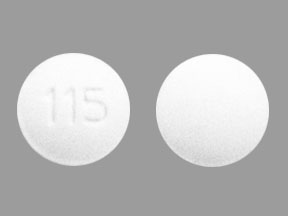Methamphetamine Dosage
Medically reviewed by Drugs.com. Last updated on Jan 23, 2024.
Applies to the following strengths: 5 mg; 10 mg; 15 mg
Usual Pediatric Dose for:
Additional dosage information:
Usual Pediatric Dose for Attention Deficit Disorder
6 years and older:
- Initial dose: 5 mg orally once or twice a day
- Titration dose: May increase daily dosage by 5 mg at weekly intervals until achieving optimum clinical response
- Maintenance dose: The usual effective dose is 20 to 25 mg per day.
Comments:
- The total daily dose may be given in 2 divided doses.
Use: As an integral part of a total treatment program for attention deficit disorder with hyperactivity, which typically includes other remedial measures (psychological, educational, social) for a stabilizing effect in patients with a behavioral syndrome characterized by the following group of developmentally inappropriate symptoms: moderate to severe distractibility, short attention span, hyperactivity, emotional lability, and impulsivity
Renal Dose Adjustments
Data not available
Liver Dose Adjustments
Data not available
Precautions
US BOXED WARNING:
- ABUSE, MISUSE, AND ADDICTION: This drug has a high potential for abuse and misuse, which can lead to development of a substance use disorder, including addiction. Misuse and abuse of CNS stimulants (including this drug) can result in overdose and death; this risk is increased with higher doses or unapproved methods of administration (e.g., snorting, injection). Before prescribing this drug, each patient's risk for abuse, misuse, and addiction should be assessed. Patients and their families should be educated about these risks, proper drug storage, and proper disposal of any unused drug. Throughout therapy, each patient's risk of abuse, misuse, and addiction should be reassessed; frequent monitoring for signs/symptoms of abuse, misuse, and addiction is recommended.
CONTRAINDICATIONS:
- Known hypersensitivity to amphetamine, or any of the ingredients in this product
- With monoamine oxidase inhibitors (MAOIs) or within 14 days of stopping MAOIs (including MAOIs such as linezolid or IV methylene blue) due to an increased risk of hypertensive crisis
Safety and efficacy have not been established in patients younger than 6 years.
Consult WARNINGS section for additional precautions.
US Controlled Substance: Schedule II
Dialysis
Data not available
Comments:
- D-amphetamine is not dialyzable.
Other Comments
Administration advice:
- Before therapy, assess for the presence of cardiac disease (i.e., perform a careful history, family history of sudden death or ventricular arrhythmia, and physical exam).
- Before therapy, assess the family history and clinically evaluate patients for motor or verbal tics or Tourette's syndrome.
- Administer this drug at the lowest effective dosage; individually adjust dosage.
- Avoid late evening medication due to the resulting insomnia.
Storage requirements:
- Store at 20C to 25C (68F to 77F).
- Dispense in a tight, light-resistant container.
General:
- The diagnosis of attention deficit disorder with hyperactivity should not be made with finality when the symptoms (moderate to severe distractibility, short attention span, hyperactivity, emotional lability, impulsivity) are only of comparatively recent origin.
- Nonlocalizing (soft) neurological signs, learning disability, and abnormal electroencephalogram may or may not be present, and a diagnosis of CNS dysfunction may or may not be warranted.
- Hypersensitivity reactions (e.g., angioedema, anaphylactic reactions) have been reported in patients treated with other amphetamine products.
- Prescribing and dispensing of this drug should be limited to the smallest amount feasible at one time to minimize the possibility of overdosage.
Monitoring:
- Cardiovascular: For potential tachycardia and hypertension in all patients
- Musculoskeletal: Growth, including weight and height; for digital changes (during therapy)
- Nervous system: For the emergence/worsening of Tourette's syndrome
- Psychiatric: For signs/symptoms of abuse, misuse, and addiction; for the emergence/worsening of tics
Patient advice:
- Read the US FDA-approved patient labeling (Medication Guide).
- Store this drug in a safe place (preferably locked); do not give this drug to anyone else.
- This drug may impair the ability to engage in potentially hazardous activities (e.g., operating machinery, driving a motor vehicle).
- Report to physician any new numbness, pain, skin color change, or sensitivity to temperature in fingers or toes.
- Contact physician immediately with any signs of unexplained wounds appearing on fingers or toes while taking this drug.
- Notify health care provider if emergence/worsening of tics or Tourette's syndrome occurs.
- Do not increase dosage, except on advice of the physician.
Frequently asked questions
More about methamphetamine
- Check interactions
- Compare alternatives
- Pricing & coupons
- Reviews (78)
- Drug images
- Side effects
- During pregnancy
- Support group
- Drug class: anorexiants
- Breastfeeding
- En español
Patient resources
Other brands
Professional resources
Other brands
Related treatment guides
See also:
Further information
Always consult your healthcare provider to ensure the information displayed on this page applies to your personal circumstances.


